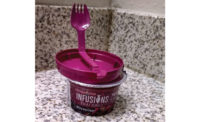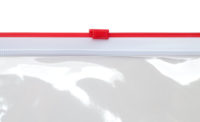Resealable Packaging Pleases Consumers

Reclosable/resealable packaging is not uncommon for meat, poultry and seafood, especially for pre-sliced deli meat and products such as frozen meatballs or shredded chicken. Even a small survey of consumers shows a majority prefer reclosable/resealable packaging when buying multi-portion meat, poultry and seafood products. For 74 percent, reclosability is “Very Important” or “Somewhat Important” to their purchase decision, according to a SurveyMonkey survey of 62 consumers.
The favorite reclosable/resealable package among this group of consumers is the slider zipper. It’s favored by 38 percent, followed by the multitrack press-to-close zipper at 33 percent, the tub with pull-off/press-on lid at 14 percent, the single-track press-to-close zipper at 12 percent and the peel-up/reseal flap or label at 3 percent.
The popularity of the slider zipper is not surprising. Hannah Boulton, an advocate of senior-friendly packaging and founder of Openez, rates it as the most senior-friendly of the resealable/reclosable options. Noting that senior-friendly also is consumer-friendly, she says, “We all like the slider zipper because it’s easier to grasp with the thumb and index finger and pull across. You can really see what you are doing. [With press-to-close zippers,] sometimes lining up the tracks, either single or double, is more difficult.” She also advocates the use of color to show when tracks are engaging securely as well as for instructional flags such as a red or yellow arrow to show where to tear or cut to open or press to reseal. “Color is always helpful,” she notes.
The sustainability of the package also is a major consideration in the purchase decision. The majority of survey respondents, 74 percent, consider recyclability of the reclosable/resealable package when they buy a meat, poultry or seafood product. On the other side, roughly one-fifth of the respondents characterize recyclability as not so important. Only about 5 percent say it’s not at all important.
The potential for reuse, another attribute that enhances the sustainability profile of a package, appeals to many consumers but in this survey, those who reuse the tub and lid had only a small edge over those who don’t (54 percent tub savers versus 46 percent non-savers).
Another cornerstone of sustainability, source reduction, reduces the amount of packaging by lightweighting. This often is accomplished by switching from rigid to flexible packaging, which is inherently lighter, or by redesigning the packaging to use less material. Flexible packaging is growing in popularity as evidenced by the reclosable zipper pack chosen for Smithfield Prime Fresh Delicatessen sliced lunchmeat. It won a Silver Award for expanding the use of flexible packaging in the Flexible Packaging Association’s 2021 Flexible Packaging Achievement Awards competition. The Prime Fresh package resembles bags used at the deli counter and evokes the freshness of a just-sliced product. The surface-printed, high-barrier, coextruded dual forming web replaces more typically used laminations. The result is improved shelf life, less product waste and a source reduction of 31 percent compared with the tub/lid format.

Another source-reduced package is the redesign of a lid/tray combination for deli products. The two-piece design (tray with peelable/resealable lidstock) replaces the common three-piece tray-lidstock-lid combination. Eliminating the press-on lid not only reduces waste, but also streamlines the packaging line. The polypropylene trays are compatible with in-mold labeling, which enhances the barrier properties of the packaging, protects graphics from moisture and damage and eliminates the labeling operation as well as labels made from a different material that could affect package recyclability.
When selecting resealable packaging, sustainability is just one factor to be considered. Brand owners also want tamper evidence and user-friendliness – especially ease of opening and reclosing for senior consumers or others with less hand strength or mobility. Boulton cites Applegate Farms as a good example. The latest iteration of its deli meat packaging enhances senior-friendliness by improving access to the peel/reseal function and reducing the aggressiveness of the seal. With the new packaging, “the meat remains perfect to eat,” says Boulton.
Looking for a reprint of this article?
From high-res PDFs to custom plaques, order your copy today!






